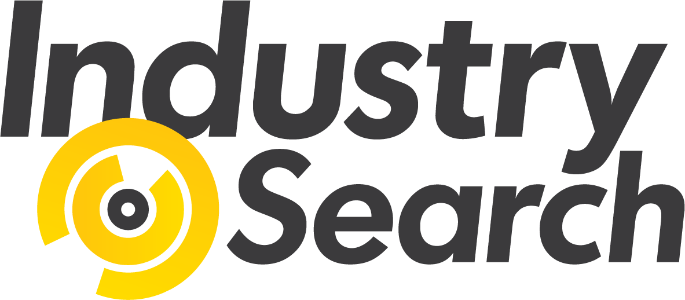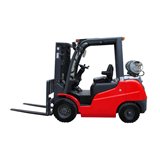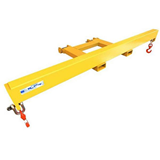Explore Australia's forklift buying guide—pricing, types, maintenance, financing, and compliance tips to help you choose the right equipment.
Key Takeaways
- Price Range: Forklift prices in Australia vary depending on the type and specifications. Electric forklifts cost between $30,000 and $50,000, while internal combustion models range from $25,000 to $60,000.
- Types of Forklifts: The main types are electric, internal combustion (IC), warehouse forklifts, and rough terrain forklifts, each suited for different environments and tasks.
- Maintenance Costs: Expect to spend between $1,500 and $4,000 annually for forklift maintenance, depending on type and usage.
- Financing Options: Forklift financing can include leasing, hire purchase, and chattel mortgage, with interest rates typically ranging from 5% to 9%.
- Compliance: Forklifts must comply with Australian standards such as AS 2359 and Work Health and Safety (WHS) regulations.
Introduction
Forklifts are essential tools in many Australian industries, including warehousing, logistics, and construction. With various types available, it's crucial to choose the right forklift to meet your business needs. This guide will help you understand the different types of forklifts, their prices, operations, maintenance, and financing options, as well as key compliance considerations. By the end of this guide, you'll have all the information you need to make a well-informed decision when purchasing a forklift.
Types of Forklifts and Their Prices
Forklifts come in various types, each designed for different environments and tasks. Understanding their features and prices is key to selecting the right one.
1. Electric Forklifts
- Price: $30,000 to $50,000.
- Best for: Indoor environments, especially warehouses.
- Capacity: 1.5 to 5 tonnes.
- Advantages: Low emissions, low maintenance, quiet operation.
- Disadvantages: Limited range, higher upfront cost.
2. Internal Combustion (IC) Forklifts
- Price: $25,000 to $60,000.
- Best for: Outdoor use and rough terrain.
- Capacity: 1.5 to 10 tonnes.
- Advantages: High lifting capacity, fast refueling, robust design.
- Disadvantages: Higher fuel and maintenance costs, noisy operation.
3. Warehouse Forklifts
- Price: $25,000 to $45,000.
- Best for: Narrow aisles and confined spaces.
- Capacity: 1.5 to 3 tonnes.
- Advantages: Maneuverable, low operating costs.
- Disadvantages: Limited outdoor use, smaller lifting capacity.
4. Rough Terrain Forklifts
- Price: $50,000 to $100,000.
- Best for: Construction sites or farms.
- Capacity: 5 to 10 tonnes.
- Advantages: High ground clearance, stable on uneven surfaces.
- Disadvantages: Expensive, less maneuverable, high fuel consumption.
Forklift Operations
To maximise efficiency and safety, proper forklift operations are essential.
1. Operator Training
- Operators must hold a National Licence to operate a forklift.
- Regular safety and operational training is crucial.
- Refresher courses should be held annually or as needed.
2. Safety Considerations
- Follow Work Health and Safety (WHS) guidelines.
- Perform daily pre-operation checks on critical components.
- Forklifts should have safety features like reversing alarms and seat belts.
3. Productivity Enhancements
- Choose forklifts with ergonomic features for operator comfort.
- Implement fleet management systems to track usage and maintenance.
- Automatic speed control and smart lifting systems can improve efficiency.
4. Environment Considerations
- Select forklifts based on the operating environment (e.g., electric forklifts for indoors).
- Ensure forklifts are equipped for extreme weather or cold storage if needed.
- Consider forklifts with adequate lighting for night-time operations.
Forklift Maintenance
Proper maintenance ensures longevity and reduces unexpected repair costs.
1. Routine Inspections
- Perform daily checks for critical components like brakes and hydraulics.
- Conduct monthly inspections for tyres and fluid levels.
- Annual servicing by a qualified technician is recommended.
2. Battery Maintenance (for Electric Forklifts)
- Regularly clean battery terminals and monitor charge levels.
- Replace batteries after 4 to 6 years of use.
- Follow charging protocols to extend battery life.
3. Fuel and Fluid Checks (for IC Forklifts)
- Regularly check fuel, oil, and coolant levels.
- Change engine oil every 250 to 500 hours.
- Replace filters as needed to maintain performance.
4. Cost of Maintenance
- Annual maintenance costs range from $1,500 to $4,000.
- Regular servicing extends forklift lifespan (typically 10 to 15 years).
- Skipping maintenance can lead to higher repair costs and downtime.
Forklift Parts
Replacement parts are necessary over time due to wear and tear. Key parts include:
1. Batteries (Electric Forklifts)
- Replacement costs: $2,000 to $5,000.
- Maintain battery health by cleaning terminals and checking charge levels.
- Battery replacement is needed every 4 to 6 years.
2. Mast and Forks
- Repair/replacement cost: $1,000 to $3,000.
- Inspect forks regularly to ensure they’re not bent or cracked.
- Lubricate mast regularly to ensure smooth lifting operation.
3. Tyres
- Replacement cost: $300 to $600 per tyre.
- Check for wear regularly, especially in pneumatic tyres for outdoor use.
- Replace tyres when the tread is worn or damaged.
4. Hydraulic System Parts
- Repair/replacement cost: $500 to $2,000.
- Regularly check hydraulic fluid levels.
- Inspect for leaks and replace any faulty hydraulic hoses.
Forklift Financing Options
Several financing methods can help spread out the cost of purchasing a forklift.
1. Hire Purchase
- Pay off the forklift over 12 months to 5 years.
- Interest rates range from 6% to 9%.
- At the end of the term, you own the forklift.
2. Leasing
- Rent the forklift with the option to buy at the end.
- Lower monthly payments compared to hire purchase.
- Flexibility to upgrade the forklift after the lease term.
3. Chattel Mortgage
- Own the forklift while receiving potential tax benefits.
- Interest rates typically range from 5% to 8%.
- GST credits may be available for business use.
4. Operating Lease
- Rent without the option to buy.
- Lower payments but no ownership at the end.
- Lease payments may be tax-deductible.
Compliance and Certification
Forklifts in Australia must meet safety and operational standards.
1. Australian Standards (AS 2359)
- Forklifts must be registered and comply with AS 2359 safety standards.
- Design registration certificates are required for all forklifts.
2. Work Health and Safety (WHS) Regulations
- Forklifts must meet WHS regulations for safe operation.
- Employers must ensure proper training for operators and conduct safety audits.
3. Forklift Safety Inspections
- Regular inspections are required to meet compliance.
- Inspections should include checks for structural damage and hydraulic leaks.
4. Certification for Operators
- Operators must hold a National Licence (TLILIC0003).
- Refresher training is recommended annually or when new equipment is introduced.
Common Questions Forklift Buyers Have
1. What factors should I consider when choosing a forklift?
- Consider terrain (indoor/outdoor), lifting capacity, and fuel type (electric vs. internal combustion).
2. How often should my forklift be serviced?
- Forklifts should be serviced annually, with daily pre-operation checks to ensure safety.
3. Can I finance a forklift purchase in Australia?
- Yes, options include hire purchase, leasing, and chattel mortgage, with interest rates from 5% to 9%.
4. How can I ensure compliance with forklift regulations?
- Ensure the forklift meets Australian Standards (AS 2359) and Work Health and Safety guidelines. Operators must be certified and undergo regular training.
Conclusion
Purchasing a forklift is a significant investment for any Australian business. By understanding the types of forklifts, their pricing, maintenance, financing options, and compliance requirements, you can make an informed decision. Whether you choose an electric forklift for indoor use or an internal combustion model for outdoor heavy-duty tasks, ensuring the right fit for your business will help maximise productivity and reduce long-term costs.





-160x160-state_article-rel-cat.png)











-205x205.jpg)